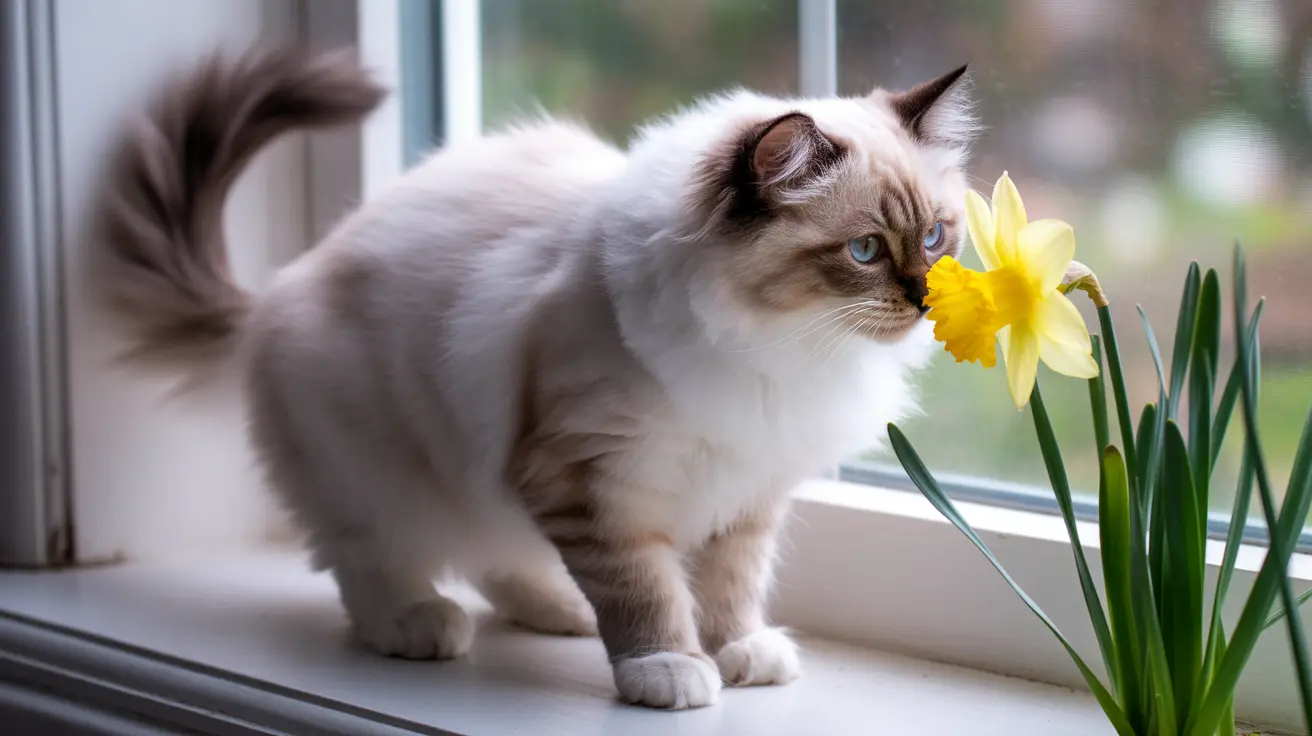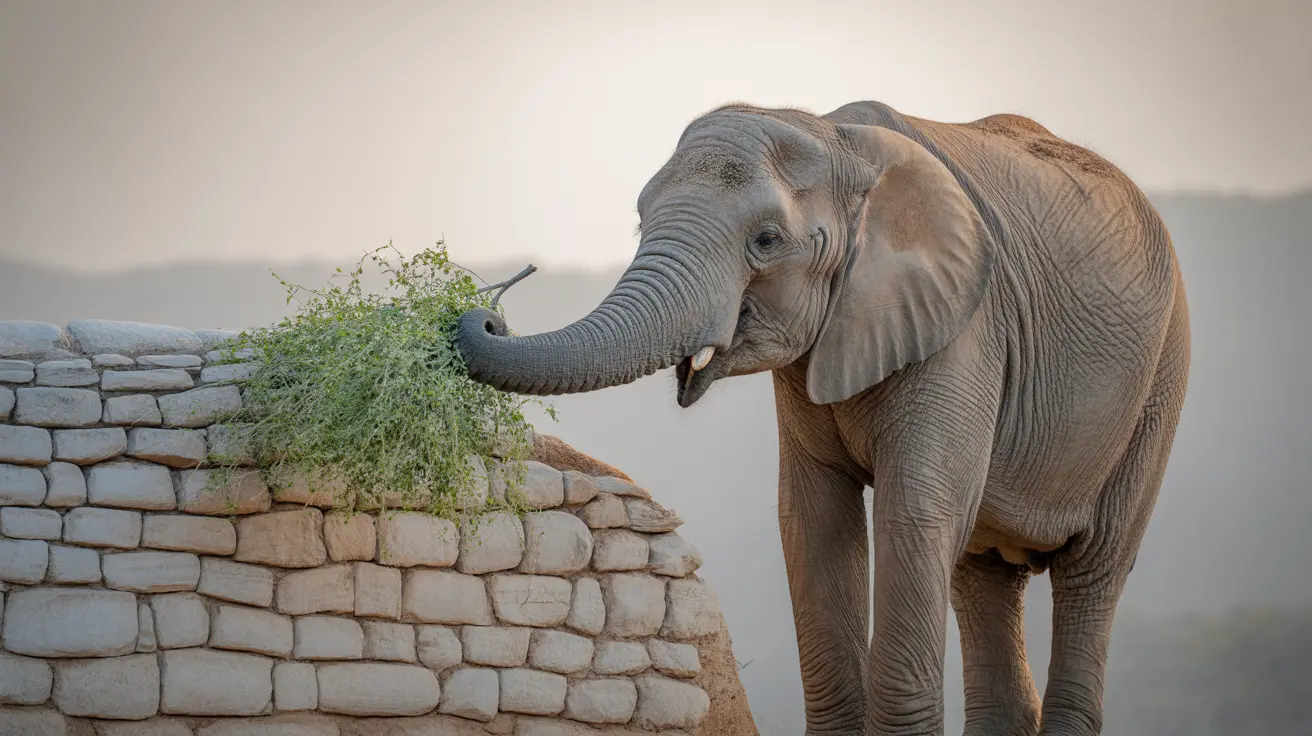Are Daffodils Toxic to Cats? Essential Safety Guide for Pet Owners
Spring brings the promise of beautiful blooms, and daffodils are among the most beloved harbingers of the season. However, if you're a cat owner, these cheerful yellow flowers pose a serious hidden danger to your feline companion. Understanding whether daffodils are toxic to cats is crucial for maintaining a safe home environment while still enjoying the beauty of spring flowers.
Daffodils (Narcissus spp.) are indeed toxic to cats, containing harmful alkaloids that can cause severe health complications. The ASPCA classifies these popular spring flowers as poisonous to cats, dogs, and horses, making awareness and prevention essential for responsible pet ownership. Every part of the daffodil plant presents a risk, with the bulb containing the highest concentration of toxic compounds.
This comprehensive guide will help you understand the specific dangers daffodils pose to cats, recognize the warning signs of poisoning, and discover safe alternatives that allow you to enjoy beautiful flowers without compromising your pet's wellbeing.
Understanding Daffodil Toxicity in Cats
The toxic nature of daffodils stems from their chemical composition, specifically the presence of dangerous alkaloids. Lycorine and galantamine are the primary toxic compounds found throughout the daffodil plant, with the highest concentrations located in the bulbs. These alkaloids affect the feline nervous system and can cause significant physiological distress when ingested.
What makes daffodils particularly dangerous is that toxicity isn't limited to a single part of the plant. While the bulb contains the most poisonous substances, cats who ingest any part of the daffodil plant—including leaves and petals—may experience toxicity symptoms. This widespread distribution of toxic compounds means that even casual nibbling on seemingly harmless flowers or leaves can lead to serious health complications.
How Toxic Compounds Affect Cats
When cats ingest daffodil plant material, the lycorine and other alkaloids quickly begin affecting their system. These compounds cause gastrointestinal irritation and can progress to more severe cardiovascular effects. The toxic effects in cats are generally more severe than in humans, likely due to cats ingesting larger doses relative to their body weight or species-specific reactions to these alkaloids.
Daffodil extracts and physical crystals present in the plant can also cause skin irritation in some animals, adding another layer of concern for cat owners. The concentrated nature of these toxins means that even small amounts can trigger noticeable symptoms in cats.
Recognizing Signs of Daffodil Poisoning in Cats
Clinical signs of daffodil poisoning typically appear within a few hours of ingestion, making early recognition crucial for effective treatment. The progression and severity of symptoms can vary depending on the amount consumed and which part of the plant was ingested, but cat owners should be alert to any combination of the following warning signs.
Early Warning Signs
The initial symptoms of daffodil poisoning in cats often involve gastrointestinal distress. Excessive drooling and tissue irritation around the mouth are frequently the first signs, followed by stomach pain and discomfort. Cats may exhibit signs of nausea and begin vomiting, which can range from mild to severe depending on the amount of plant material consumed.
Loss of appetite is another early indicator, as the toxic compounds cause significant digestive upset. Diarrhea typically follows, and cats may show general signs of discomfort or lethargy as their body attempts to process the toxic substances.
Severe Symptoms Requiring Immediate Care
In more serious cases of daffodil poisoning, cats can develop alarming neurological and cardiovascular symptoms. Tremors and convulsions may occur as the alkaloids affect the nervous system. A documented clinical case of an adult cat with daffodil toxicosis showed symptoms including severe hypothermia, bradycardia (slow heart rate), and hypotension (low blood pressure).
Additional severe symptoms can include cardiac arrhythmias, breathing difficulties, and in extreme cases, collapse or coma. If a cat shows symptoms such as repeated vomiting, bloody vomit, bloody diarrhea, or any signs of neurological distress, immediate veterinary care is essential. While daffodil poisoning in cats is rarely fatal, it can cause significant distress and potentially life-threatening complications without proper treatment.
Immediate Response and Veterinary Treatment
When daffodil ingestion is suspected, time is of the essence. The best course of action is immediate consultation with a veterinarian for accurate diagnosis and treatment. Cat owners should avoid attempting at-home treatments, as professional intervention provides the safest and most effective approach to managing daffodil toxicity.
Professional Treatment Options
Veterinary treatment for daffodil poisoning typically involves several approaches depending on the severity of symptoms. A veterinarian may utilize activated charcoal to absorb toxins remaining in the digestive system, helping to prevent further absorption of the harmful alkaloids. In some cases, induced vomiting may be recommended if ingestion was recent and the cat hasn't already begun vomiting.
For cats showing more severe symptoms, treatment becomes more intensive. Intravenous fluids are commonly administered to treat dehydration and support cardiovascular function. The documented clinical case mentioned earlier required treatment with atropine for heart rhythm issues, dexamethasone for inflammation, comprehensive fluid therapy, and continuous supportive care. Remarkably, with proper veterinary intervention, the cat in this case fully recovered after six days of treatment.
Monitoring and Supportive Care
Throughout the treatment process, continuous monitoring is essential. Anti-nausea medication may be prescribed to help manage ongoing vomiting, while fluid therapy helps maintain proper hydration and supports the body's natural detoxification processes. The duration and intensity of treatment depend on the amount ingested and the individual cat's response to therapy.
Prevention Strategies for Cat Owners
Preventing daffodil poisoning requires a proactive approach to home and garden management. The key is removing opportunities for cats to access these toxic plants while still maintaining an attractive living environment.
Indoor Plant Management
For indoor daffodils, the most effective prevention strategy is complete removal from areas accessible to cats. If you wish to keep daffodils indoors, consider placing plants in secure containers or rooms that can be completely closed off from feline access. However, given cats' curiosity and climbing abilities, complete separation is often the safest approach.
When disposing of daffodil arrangements or garden waste containing daffodils, ensure proper disposal that prevents cats from accessing discarded plant material. Even wilted or dried daffodil parts retain their toxicity and can pose ongoing risks.
Outdoor and Balcony Safety
Garden management presents additional challenges, especially for outdoor cats or those with access to balconies and patios. Supervising outdoor cats around gardens with daffodils is essential, though this may not always be practical. Consider creating designated cat-safe areas in your garden while keeping daffodil plantings in sections that can be effectively blocked from feline access.
For balcony gardens, elevated planters or hanging arrangements can help keep daffodils out of reach, though determined cats may still find ways to access them. The safest approach is often choosing alternative flowers that provide similar visual appeal without the associated risks.
Safe Spring Flower Alternatives for Cat Owners
Cat owners don't need to sacrifice beautiful spring displays to keep their pets safe. Numerous attractive flowers and plants provide excellent alternatives to daffodils while posing no toxicity risks to feline companions.
Cat-Safe Flower Options
Several flowers are completely safe for cats and can create stunning spring arrangements. Gerbera daisies offer vibrant colors and long-lasting blooms, making them excellent replacements for daffodils in both garden settings and cut flower arrangements. Roses provide classic beauty and fragrance without any toxicity concerns, though cat owners should be mindful of thorns when arranging them.
Orchids represent another elegant option, offering exotic beauty and extended bloom periods. Snapdragons, sunflowers, and zinnias round out the list of safe flowering options that can brighten any space without endangering curious cats. For potted arrangements, consider lisianthus or pansies, which provide colorful seasonal displays.
Cat-Safe Houseplants
Beyond flowers, numerous houseplants are safe for cats and can contribute to an attractive indoor environment. Christmas cactus, maidenhair fern, peperomia, prayer plants, parlour palm, spider plant, sword fern, and string of hearts all offer various textures and visual interest without posing health risks.
These plants allow cat owners to maintain green spaces indoors while ensuring their pets can explore and interact with their environment safely. Many of these plants are also relatively low-maintenance, making them practical choices for busy households.
Creating a Comprehensive Plant Safety Plan
Developing a thorough understanding of plant toxicity extends beyond just daffodils. Cat owners benefit from familiarizing themselves with other common toxic plants and developing comprehensive safety protocols for their homes and gardens.
Plants to Avoid
In addition to daffodils, several other popular flowers and plants pose significant risks to cats. Lilies are particularly dangerous and can cause kidney failure in cats. Tulips, another spring favorite, also carry toxicity risks. Understanding which plants to avoid helps cat owners make informed decisions when decorating their homes or planning garden layouts.
Developing familiarity with the signs of plant poisoning in general—including excessive salivation, vomiting, diarrhea, twitching, fitting, breathing difficulties, collapse, or coma—enables faster recognition and response when incidents occur. Early veterinary intervention consistently increases the likelihood of successful outcomes.
Building Emergency Preparedness
Every cat owner should have a plan for potential poisoning emergencies. This includes having your veterinarian's contact information readily available, knowing the location of the nearest emergency veterinary clinic, and understanding basic first aid principles. Keep activated charcoal and other basic supplies on hand only under veterinary guidance, as improper use can sometimes worsen situations.
Frequently Asked Questions
- What should I do if my cat ate part of a daffodil?
Contact your veterinarian immediately, even if your cat isn't showing symptoms yet. Clinical signs typically appear within a few hours of ingestion, but early intervention provides the best outcomes. Avoid inducing vomiting or attempting home remedies unless specifically directed by a veterinary professional.
- Are daffodil bulbs more dangerous than the flowers and leaves?
Yes, daffodil bulbs contain the highest concentration of toxic alkaloids like lycorine and galantamine. However, all parts of the plant are toxic to cats, including flowers and leaves, so any ingestion should be treated as a potential emergency.
- How long does it take for daffodil poisoning symptoms to appear in cats?
Symptoms typically appear within a few hours of ingestion. Early signs include excessive drooling, vomiting, and diarrhea, while more severe symptoms like tremors or cardiovascular effects may develop later depending on the amount consumed.
- Can cats recover fully from daffodil poisoning?
Yes, with prompt veterinary treatment, cats can make full recoveries from daffodil poisoning. A documented case showed complete recovery after six days of intensive treatment. The key is seeking immediate professional care when ingestion is suspected.
- Are there any spring flowers that are completely safe for cats?
Yes, several spring flowers are safe for cats, including gerbera daisies, roses, orchids, snapdragons, sunflowers, zinnias, lisianthus, and pansies. These provide beautiful alternatives without the toxicity risks associated with daffodils.
- What other common household plants should I avoid if I have cats?
Avoid lilies (extremely dangerous), tulips, and any plants in the Narcissus family. Always research new plants before bringing them home, and consider creating a dedicated list of toxic plants for quick reference.
- Is flower food in daffodil arrangements also dangerous to cats?
Flower food solutions are generally not highly toxic but may cause mild gastrointestinal upset if ingested. However, the primary concern with daffodil arrangements remains the plant material itself, not the preservative solutions.
Conclusion
Understanding that daffodils are toxic to cats is essential knowledge for responsible pet ownership. The presence of lycorine and other alkaloids throughout the plant makes every part potentially dangerous, from the highly toxic bulbs to the seemingly innocent flowers and leaves. Recognition of poisoning symptoms and immediate veterinary intervention can mean the difference between a manageable health incident and a serious emergency.
Fortunately, cat owners don't need to choose between beautiful spring displays and pet safety. Numerous attractive alternatives like gerbera daisies, roses, and orchids provide the same seasonal joy without the associated risks. By making informed choices about plants and flowers, maintaining awareness of poisoning symptoms, and developing emergency response plans, cat owners can create environments that are both beautiful and safe for their beloved feline companions.






